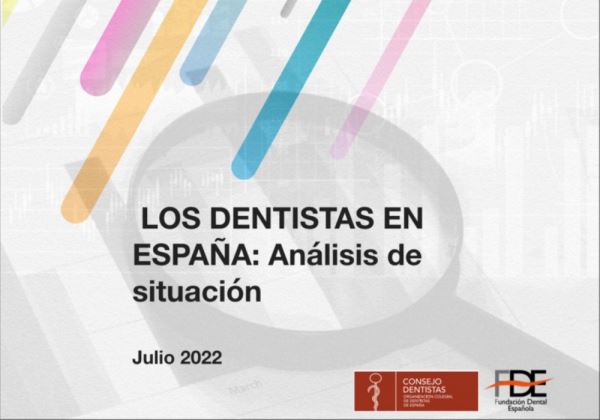Our Blog
The General Council prepares a Technical Report on the Demography of Dentists in Spain
The General Council of Dentists has prepared a technical report on the demography of dentists in Spain where the density of professionals by population, the demographic evolution in the last two decades and the probable evolution of the data for the year 2030 are analyzed. The data published in 2022 by the National Institute of Statistics (INE) regarding the number of registered dentists has been used; to Eurostat 2021 for the analysis of the relationship between density of dentists and average visits per year; and to the 2022 figures of the Council of European Chief Dental Officers (CECDO) for the comparative analysis between the EU countries.
Current situation of dentists in Spain
The latest data published by the INE in June 2022 indicate that as of January 1, 2022, the number of registered dentists in Spain was 40,417, which represents a ratio of 1 dentist per 1,171 inhabitants. Annually, some 1,750 new professionals graduate from one of the 23 existing faculties (12 public and 11 private). A month ago, the Council of Ministers approved the creation of a new private faculty (Camilo José Cela University, in Madrid) from which graduates will be added as of June 2027.
A vast majority of registered dentists (97%) practice their profession in the private sphere, in one of the more than 23,000 registered dental clinics. Figures that contrast with those of Public Health, where only about 1,200-1,300 dentists work in Primary Care . Given this information, Dr. Óscar Castro Reino, president of the General Council of Dentists, considers that "it is very urgent to expand the number of places for dentists in Public Health, above all, to be able to carry out the announced Oral Health Plan by the Government and offer a good quality of care to the seven million patients who will benefit from this program”.
Between 1995 and 2022, the growth in the number of dentists has been 205%, while for doctors and pharmacists it has been 70% and 85%, respectively. Current figures show that each year around 700-900 professionals are registered. Bearing in mind that some 1,750 new professionals graduate annually, it follows that many of them choose to practice in another country other than the European Union. In recent years, the request for Good Standing certificates (essential document for practicing in any EU country, outside our borders) to the General Council of Dentists has increased exponentially.
Unlike other countries around us, the dental profession in Spain has been rejuvenated and feminized, with the average age standing at 39 years and 57% being women.
Projection for 2030
The projection analyzes carried out indicate that the number of registered dentists will go from 40,417 in 2021 to 47,167 in 2030. This would mean an increase of close to 17% in registration in the period 2021-2030. This projection does not include, for obvious reasons of uncertainty, the possible professionals from homologation of qualifications. The analysis of the real number of dentists (registered and non-registered) according to the projection of the expected number of graduates, shows that it will go from 41,350 in 2021 to 49,987 in 2030, that is, that there will be an increase of 21%. In this period it is estimated that a total of 6,700-7,000 new professionals will choose to emigrate to an EU country for work reasons.
Density of dentists in Spain
The current rate of dentists per 100,000 inhabitants in Spain is 85, with the EU average being 76. This rate is similar to that of Norway and Germany (countries with a much higher demand for oral care) and surpassed by countries such as Greece, Bulgaria , Cyprus or Portugal.
The projection of the Spanish population for 2030 carried out by the INE is 47,749,000 inhabitants for Spain. With these figures, the density of dentists in our country would reach 105 dentists per 100,000 inhabitants in 2030. It should be borne in mind that Spain is one of the EU countries where dentists are less frequently visited for regular check-ups. Data from the latest White Paper on Oral Health in Spain from 2020 indicates that only 51% of the population had visited the dentist in the previous 12 months. Regarding the average number of visits per inhabitant and year, Eurostat data from 2017 show that the average in Spain is 0.7 visits per inhabitant per year.
Dr. Castro insists on the need to “establish a numerus clausus in the faculties of Dentistry to curb this professional plethora. Spain is one of the countries of the European Union that graduates the most graduates in Dentistry each year and where fewer people go to the dentist periodically, which is causing unemployment and massive emigration to other countries.

